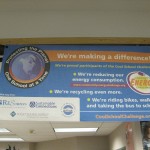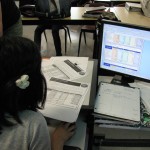We have much more to do and your continued support is needed now more than ever.
NWF’s Cool School Challenge Helps Schools Cut Carbon Emissions
Gust post by Katie Siegel
Last autumn, I had the opportunity to introduce NWF’s Cool School Challenge (CSC) to schools throughout Whatcom County, Washington as part of a partnership with the Community Energy Challenge (CEC) and the EPA’s Climate Showcase Communities Grant. The schools I worked with were able to save energy, shrink their carbon footprint, and in return, protect the planet. It was very rewarding to observe students’ excitement about taking energy-saving action into their own hands.

With regard to meeting current standards, 5th grade teachers found that since their “newest science kit is all about energy, the types, forms, transfers, etc… thinking about energy in our classroom, school, and homes was a great fit” (5th grade teacher). “Real-life connections work with math and science concepts,” said a 6th grade teacher. Many teachers were able to conduct the program in conjunction with their science curriculum as well as involve their entire school.

Overall, teachers were excited about and satisfied with the program. “This was a great program that my kids really enjoyed” said one teacher. “(There was) lots of valuable material covered which affect all of us every day on Earth,” said another.
RE Sources for Sustainable Communities worked on the CSC/CEC partnership for 3 years. During that time, 18 schools in six Whatcom County Districts participated, reducing carbon dioxide emissions by an estimated 245,284 pounds.
This was such a successful program, and I really believe the students gained a lot more awareness about their use of energy and electricity, and how making simple changes in their lives can make a big impact.
The Cool School Challenge was developed by the Puget Sound Clean Air Agency, and transferred over to the National Wildlife Federation so that it could be incorporated into the Eco-Schools USA program. The Eco-Schools USA program is part of the largest green school in the world, and aims at greening the school building, grounds, curriculum and student experience.
Learn more about Eco-Schools USA and how you can do the Cool School Challenge at your school!





















